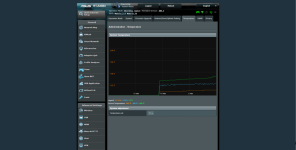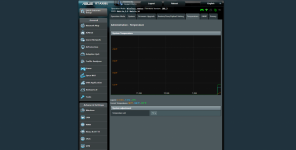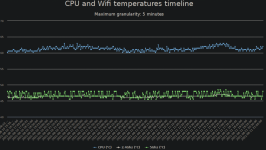Transmission (wired Raspberry Pi) is failing on one of my AC86U as soon as the router CPU temperature exceeds 88C while download speed is around14MB/s. My workaround is limitting download speed to 2.5MB/s. I ran a test by blowing air from a portable fan to the back of the router and although the drop in temperature is only a few degrees, Transmission just doesn't fail anymore. The router is idling at 85C in hot summer weather, however fans are on order and should arrive soon.
My point is that, although these temperatures have been advised as normal for this router, it just doesn't perform as expected.
My point is that, although these temperatures have been advised as normal for this router, it just doesn't perform as expected.




